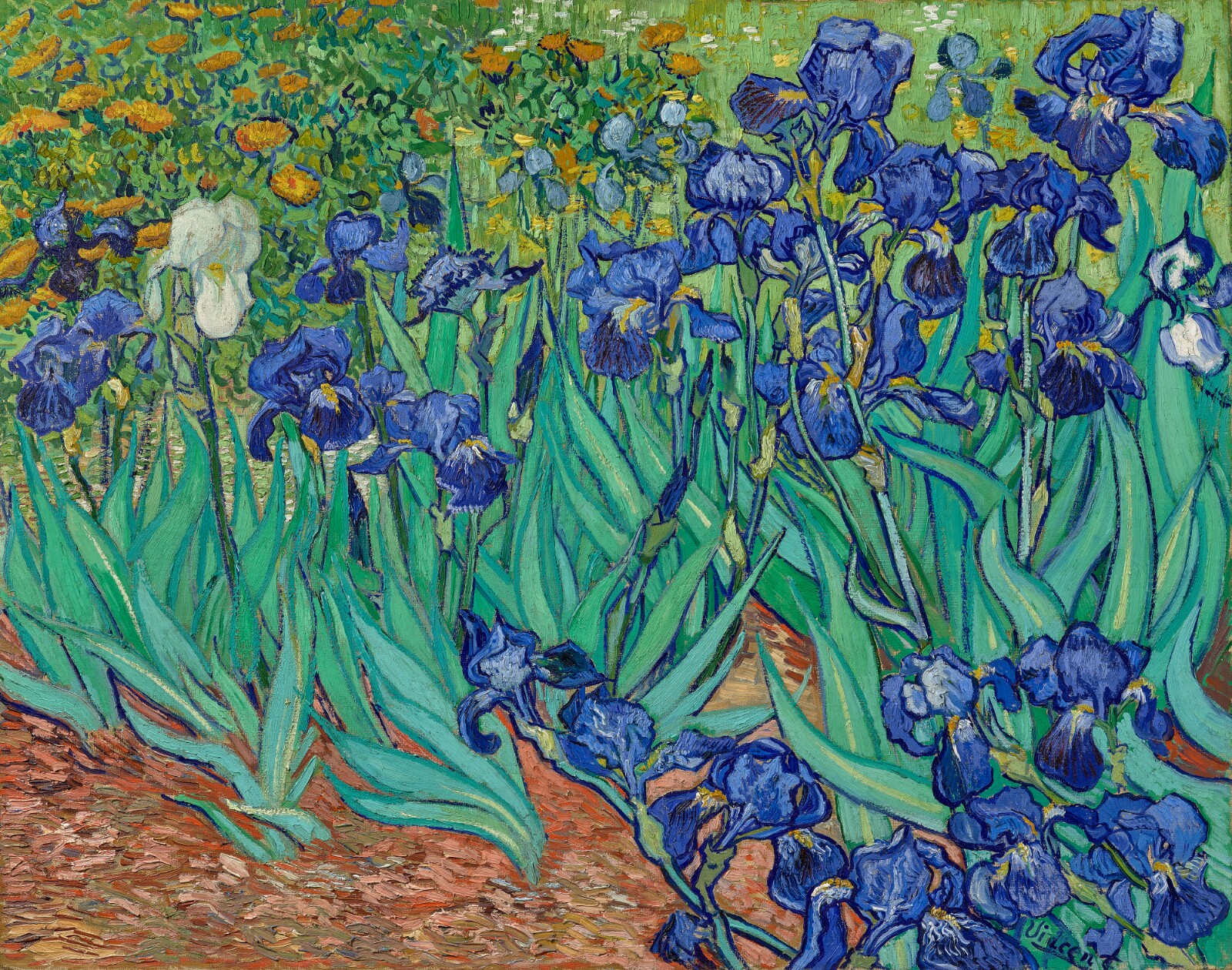Research confirms the Flowers in Van Gogh's Irises were Originally not as Blue as they appear Today

Research in new exhibition confirms the flowers in Irises were originally not as blue as they appear today.
On view at the Getty Center from October 1, 2024, through January 19, 2025, the exhibition focuses on the environment in which Irises was created and investigates how some of the colors have changed over time, reconsidering the original appearance of the famous painting.
“Art conservation is a prime example of how science intersects with art, bringing together art history with scientific research,” says Timothy Potts, Maria Hummer-Tuttle and Robert Tuttle Director of the J. Paul Getty Museum. “For years, we have wanted to undertake research on our Van Gogh Irises, a painting that is always on view at the Getty. The Museum’s closure during the COVID pandemic provided an opportunity to bring the painting into the studio for extensive research and analysis. This exhibition showcases the revelatory results of those studies.”
Using scientific instruments, Getty analyzed Irises to learn what pigments Van Gogh used, how he applied them, and how their degradation transformed the painting. In a letter to his brother Theo, Vincent said he was working on a painting of “violet irises.” However, the irises in the painting today look blue. Getty scientists and conservators conducted extensive research to understand how they may have originally appeared.
A year before his death, Van Gogh entered a psychiatric hospital in Saint-Rémy-de-Provence, France to restore his failing mental health. Fascinated by the vibrancy of the irises in the hospital garden, he began to work on his famous painting. Drawing on his knowledge of color science from writers such as Michel-Eugène Chevreul and Charles Blanc, Van Gogh sought to capture the vivid hues around him to paint the striking scene.
Van Gogh created violet paint by mixing blue and red paints. Using non-invasive analytical techniques like X-ray fluorescence spectroscopy, Getty researchers discovered markers for the highly light-sensitive red pigment called geranium lake. This pigment has since faded dramatically due to light exposure early in the painting’s history.
Van Gogh, along with other 19th-century European artists, understood that some pigments they used, including geranium lake, were susceptible to alteration yet chose to employ them regardless. Scientists and museum professionals across the world have been studying Van Gogh’s paints for years to learn more about his process and understand the changes that have occurred.
To illustrate how Irises might have originally looked, Getty researchers digitally created a reconstruction of the painting that will be on view. It highlights how the artist incorporated color science to employ complementary colors that created a rich, vibrant scene.
“This exhibition beautifully illustrates how conservators and scientists at Getty collaborate to better understand and care for works of art,” says Catherine Patterson, scientist at the Getty Conservation Institute. “The reconstruction that came from this research allows us to see Irises in a new light and gain a better appreciation of the artist’s intention.”
The exhibition also includes materials that offer a deeper look at the artist’s process, including loans from the Van Gogh Museum of a replica of a red lacquered box with balls of yarn he used to explore relationships between colors, and the original letter Van Gogh wrote to Theo soon after he began painting Irises. In the same letter, Van Gogh optimistically declares his hope for a speedy recovery, writing “I believe that all my faculties for work will come back to me quite quickly.”
Evidence that Van Gogh created Irises outdoors was found in the form of a pollen cone that became embedded in the wet paint. “We hope visitors to the exhibition will leave with a greater sense of the place in which this masterpiece was painted, and the importance of the hospital garden to Van Gogh,” says Devi Ormond, conservator at the Getty Museum.
Main Image: Irises, 1889, Vincent van Gogh. Oil on canvas, 29 1/4 x 37 1/8 in. Getty Museum, 90.PA.20
